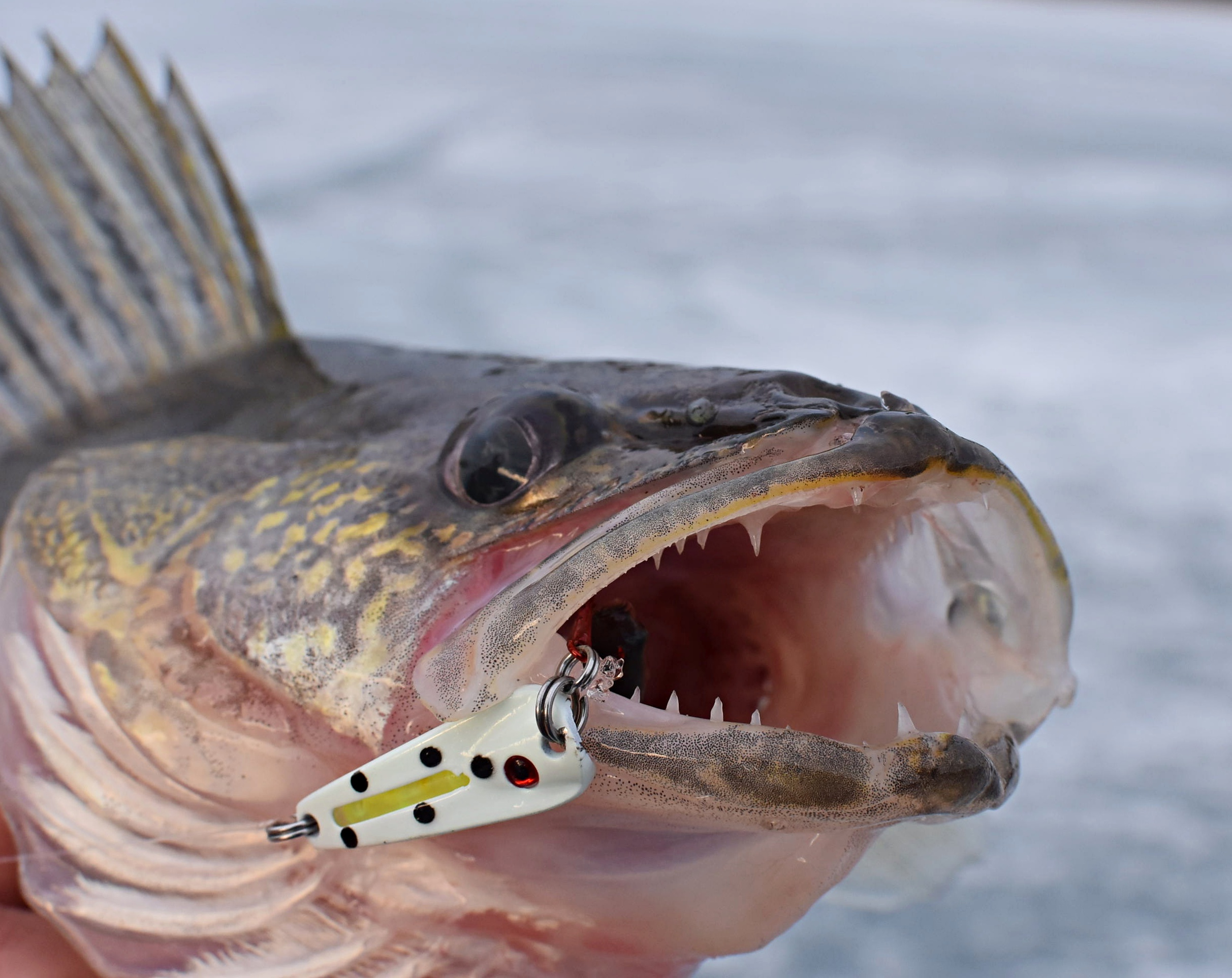by Bob Jensen

Another ice-fishing season is underway across many parts of the Midwest, and many of the anglers that hit the ice this winter will be after walleyes. Walleyes will eat a lot of different presentations. A plain hook and split-shot under a bobber works, as does a jig as we would use in open water. But perhaps the most popular presentation for walleyes involves a spoon: Walleyes really like spoons. Keep these spoon ideas in mind and you’ll increase your odds for walleyes under the ice.
There are a bunch of different types of spoons available to walleye anglers. Although they may look similar, there are some differences, and there are a few things you should consider when you’re deciding what spoon to tie onto the end of your line. Here are some of those considerations.
Is the water clear or cloudy? In cloudy water, a noisy spoon like a Buck-Shot® Rattle Spoon is the way to go. The rattling noise coming from the spoon will help walleyes find the bait easier when their sight is limited.
In clear water, the rattling noise isn’t as necessary, but it still doesn’t hurt. However, if you’re fishing clear water and see fish on your sonar come in and look at your lure but not eat it, and if you’re using a rattling lure, switch to a spoon that doesn’t rattle. A quiet lure, at times, will be more productive, especially in clear water.
Consider the color of the spoon. Again, clear or cloudy water will have a bearing on what color to start with. Clearwater: Something natural in appearance.
Cloudy water: Go with something brighter, something that will be more visible in limited visibility conditions. If you have a “glow” lure, give it a flash of light and put it down there. I’ve seen lots of times when a “glow” lure out-produced anything else.
And, again, if the fish are looking but not eating, try something else. Sometimes bright lures perform very well in clear water.
If you’re fishing walleyes that have been getting a lot of fishing pressure, try something way different. Fish become conditioned to a particular presentation. If everyone is doing the same thing and it’s not working, try something else.
Think about the physical size of your lure. In stained water, a larger spoon will be easier to see, so a large lure will often be more productive. Maybe go with a bulkier spoon made of metal, something like the Buck-Shot® Flutter Spoon. This bait flutters as it falls, so it falls slower and puts out more vibrations, making it easier for the fish to find.
When the fish are finicky, a spoon that’s smaller in appearance will often be better.
Also, consider the line you’re using. In deep water, a no-stretch line about an 8-pound test will provide outstanding sensitivity and hook-sets.
In shallower water, a 6-pound test is very good. It’s invisible and has very low stretch, so it also provides good sensitivity and hook-sets.
Something that adds taste and smell is usually hung on the spoon. A minnow or an Impulse Minnow Head will usually increase your bites.
Spoons catch walleyes as well as perch and crappies and pike. Give them a try this winter. If you haven’t tried spoons, you’ll maybe find a new friend.
To see all the new and old episodes of Fishing the Midwest television, current articles and articles from the archives, and fishing tip videos, visit fishingthemidwest.com

